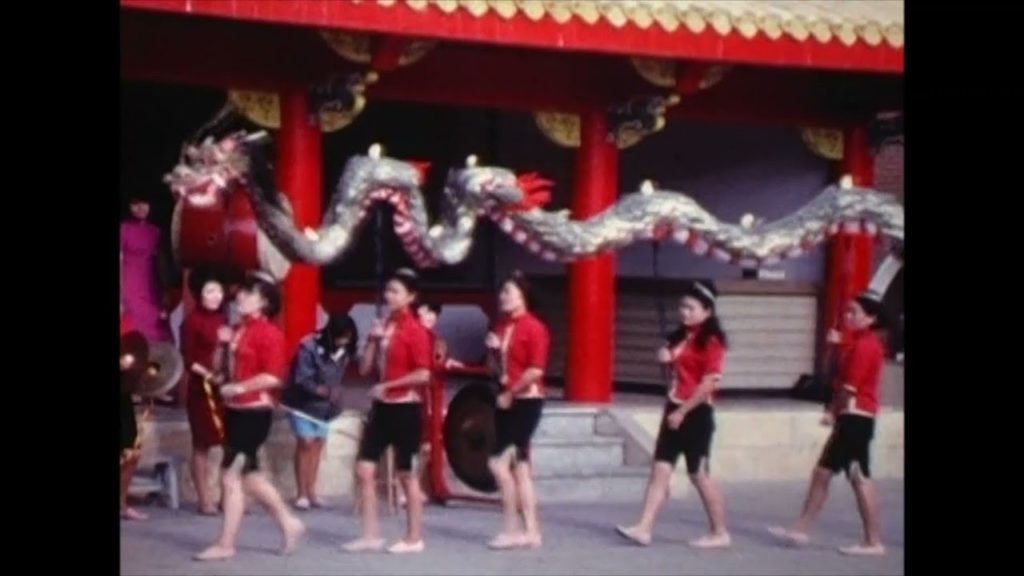1967. Nagasaki, Japan. Townscape and the traditional culture of the “Nagasaki Kunchi”. Officially an important intangible folk cultural asset of Japan.
The festival of Suwa Shrine. During World War II, atomic bombs fell on Hiroshima and Nagasaki. So many beautiful streets and smiling faces exist in the 1960’s. The Glover Garden, Nagasaki Harbor, and ships. The Glover Garden, Nagasaki Harbor, ships and the ropeway are impressive. The city is also famous for its hilly streets.Dragon.The footage taken in the 1960s is very valuable.
High school or junior high school students can be seen on a school trip. At this time, it was popular in the eastern regions of Japan to travel to the Kyushu region, where Nagasaki is located.
The church is shown in the film, and the area is a World Heritage Site that was inscribed in 2018 under the name of “The Hidden Christian Heritage of Nagasaki and Amakusa Region”.
The “Dragon Dance” is a representative performance of the Nagasaki Kunchi festival. Currently, Kagomachi, Suwa-cho, Chikugo-cho, and Goto-cho dedicate the dance, and it can be seen almost every year (there are some years when it is not), but the content, the type of dragons and the performance differ depending on the dancing town.
Basically, the event consists of the following sequence: “Tamaoi” in which the dragon chases a ball, “Zugura” in which the dragon wrapped in a mole looking for a ball hidden in its body, and “Tamaoi” again after passing under the body. When the dragon goes through the body of the dragon, the dragon’s head goes through the same area as the dragon’s head, so that the dragon’s body does not twist and turn.
When the alternates, general commanders and the dragon commanders are added together, about 80 people can make up one dragon for the dedication dance.
About World Vintage Films
I’m doing a Youtube video of footage taken from the 1910s to the 1980s.
The footage is original and was filmed by my family and my friends while they were traveling.
That’s why most of the footage was shot in Japan.
The first step in the editing process is to convert the video from analog to digital. Then I remove the unnecessary parts and add the original music and subtitles. We don’t want to hide the footage, so we don’t have many subtitles.
Black and white footage may be converted to color.
International and domestic travel around the world, before, during and after the war.
We have over 10,000 films that have not yet been released to the public. We will continue to edit and distribute a few more in the future.
There is a lot of valuable footage. Especially rare are old footage from less developed countries. At that time, the equipment for filming was rare. Pre-war footage of Japan is also valuable. Old cars and trains. There is also footage of airplanes shot from the sky. Towns and markets, and people. And people. Famous tourist spots and natural scenery. The fashion sense is also interesting and different from today. Enjoy the scenery in the old style.
Mostly on 8mm, 16mm, 9.5mm, 35mm, etc. Newer types of video, such as VHS, are not covered.
(I translate in multiple languages, so my writing is poor.)
#1960s
#NAGASAKI
#JAPAN
BGM:MusMus


AloJapan.com